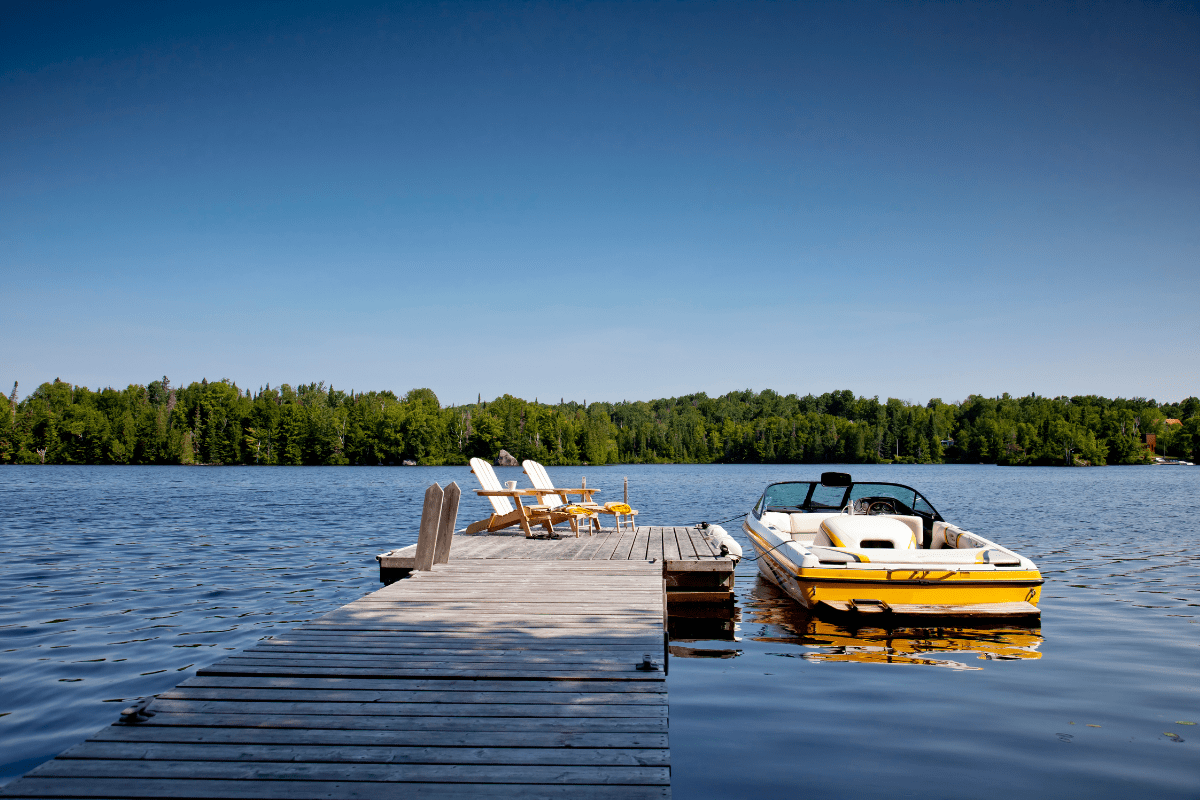Choosing a college in Washington state feels like picking a coffee shop in Seattle… overwhelming options, wildly different prices, and everyone has an opinion. But here's the thing: Washington's higher education system actually offers some of the best value in the country, whether you're eyeing the University of Washington's prestigious programs or considering a smaller school where professors actually know your name.
The big picture (spoiler: it's pretty good)
Let's start with the numbers that matter most to your wallet. Washington's public universities charge 2.61% less than the national average for in-state tuition, which might not sound like much until you realize that's real money staying in your pocket while everyone else complains about rising costs. Even better? Washington graduates carry an average debt of $23,671, making the state sixth lowest nationally for student loan burdens.
The really impressive part shows up ten years after graduation, when Washington college grads are earning between $46,400 and $55,200 annually, significantly outpacing the national median of $34,000 for bachelor's degree holders. That fancy UW-Tacoma degree? It ranks first nationally for 40-year return on investment at $1,263,000 in net present value. Yes, you read that right… over a million dollars in lifetime earnings premium.
But numbers only tell part of the story. Washington's higher education landscape includes everything from massive research universities to tiny liberal arts colleges where you'll know everyone on campus by sophomore year. The state serves over 300,000 students across all institutions, with about half attending the six major public universities. Each school has its own personality, strengths, and quirks (looking at you, Evergreen State, with your no-grades policy).
Public universities: Where most students land
The University of Washington reigns as the state's flagship institution, and honestly, it knows it. Currently ranked #46 nationally and #18 among public universities, UW Seattle accepts about 42.5% of applicants, making it selective but not impossibly so.
University of Washington: The heavyweight champion
You'll need solid credentials to get into UW Seattle… think 3.8 GPA and SAT scores between 1280-1490, though they've gone test-optional recently. The price tag for Washington residents runs $12,260 per year for tuition alone, jumping to $43,494 if you're from out of state. Add room, board, and those overpriced textbooks, and you're looking at $36,189 total for residents or $67,423 for non-residents.
The payoff for navigating UW's massive campus (seriously, wear comfortable shoes) includes access to top-10 programs in computer science and engineering, plus a medical school that'll make your parents proud. About 71% of students graduate in four years, which beats most public universities nationally. The school's Buerk Center has launched over 450 startups that have raised $85 million collectively, with an 88% ten-year survival rate for accelerator participants. Within seven months of graduation, 85% of students report positive outcomes, whether that's employment, grad school, or service opportunities.
The UW system also includes campuses in Tacoma and Bothell, which offer similar academic quality with slightly easier admission standards and smaller class sizes. Tacoma particularly shines for its urban-serving mission and that incredible ROI mentioned earlier.
Washington State University: Where everyone's happy (apparently)
Despite facing some enrollment challenges lately, WSU just snagged the #1 ranking nationally for student satisfaction from the Princeton Review. With an 85.4% acceptance rate and average GPAs around 3.59, it's significantly more accessible than UW. In-state tuition runs $13,391 annually, while out-of-staters pay $30,169.
WSU excels in agriculture, veterinary medicine, and engineering, plus they have the only wine science program in the state (because Washington). The 15:1 student-to-faculty ratio means professors might actually remember your name, unlike at larger research universities. However, only 37% of students graduate in four years, with 60% finishing within six years, something to consider when calculating total costs.
The Pullman campus offers that classic college town experience, complete with residence halls housing over 6,000 students and a tight-knit community feel. Just be prepared for the remote location… Pullman makes everywhere else in Washington feel metropolitan.
Regional universities: Hidden gems worth considering
Western Washington University in Bellingham offers the best deal at $9,582 annual tuition for residents, plus you get to live in one of the state's most beautiful small cities.
Here's what else the regional schools offer:
- Eastern Washington University: $8,586 yearly tuition
- Central Washington University: $9,402 yearly tuition
- The Evergreen State College: $9,516 yearly tuition
- Acceptance rates from 90% to 95%
- Smaller campus communities under 20,000 students
- Specialized programs in education and sciences
- Less competition for resources and opportunities
Eastern Washington focuses on polytechnic education and health sciences with the lowest tuition statewide. Central Washington produces tons of teachers and offers a 40-year ROI of $984,000, proving you don't need a prestigious name to build wealth. Evergreen State takes a completely different approach with its interdisciplinary curriculum and narrative evaluations instead of grades, perfect for students who think outside the box (or hate standardized anything).
Private schools: Expensive but often worth it
Before you dismiss private colleges as "too expensive," hear me out. These schools often provide so much financial aid that they end up costing similar to public universities, especially if your family income falls below $100,000 annually.
Liberal arts colleges: Small but mighty
Whitman College in Walla Walla tops the price list at $66,050 per year, but 95% of students receive financial aid averaging $60,896, bringing the net price down to around $29,045 for many families. With a 48% acceptance rate and average SAT scores of 1375, it's selective but not impossible. The payoff? An 87% six-year graduation rate, the highest in the state.
The University of Puget Sound charges $62,898 annually but provides average need-based grants of $42,545. It ranks #95 among national liberal arts colleges and features a respected music conservatory alongside traditional liberal arts programs. Think of it as Tacoma's answer to East Coast liberal arts colleges, minus the pretension and colonial architecture.
Jesuit universities: Values and value
Gonzaga University in Spokane (tuition: $55,480) accepts 73% of applicants and provides aid to 98% of students, averaging $27,499 per person. Beyond basketball fame, Gonzaga offers excellent programs in law, business, and engineering with that Jesuit emphasis on service and ethics.
Seattle University takes the cake for highest average aid at $54,826, despite charging $55,620 in tuition. Ranked #76 nationally for best value schools, SU maintains an 11:1 student-to-faculty ratio and average class sizes under 20 students. Located in Capitol Hill, you'll get both rigorous academics and easy access to Seattle's tech scene.
Pacific Lutheran University offers something unique: a fixed tuition guarantee of $52,256 that won't increase during your four years. With 97% of students receiving aid averaging $48,362, it's surprisingly affordable for families worried about annual price hikes.
Seattle Pacific University provides the most affordable private option at $40,407 annually, with a 91% acceptance rate and remarkably diverse student body where 59% identify as students of color.
Financial aid that actually helps
Washington's financial aid system underwent a massive transformation recently, and frankly, it's about time. The expanded Washington College Grant now covers full tuition for families earning less than $75,000 annually at public institutions.
The state has also launched several innovative programs that remove traditional barriers to college enrollment. The Washington Guaranteed Admissions Program (WAGAP) operates in 132 public school districts, sending guaranteed admission letters to qualifying students before they even apply. It's like getting pre-approved for a mortgage, except for your education and with less paperwork.
Here's what's available beyond the headline programs:
- College Bound Scholarship for low-income 7th/8th graders
- Running Start for 11th graders (10 credits free)
- Bridge grants of $500-1,000 for maximum recipients
- Work-study paying $16.66-$18.66 hourly
- Automatic qualification for SNAP recipients
- Net price calculators at every school
- Priority FAFSA deadlines for maximum aid
The College Bound Scholarship recently eliminated GPA requirements for community college attendance, recognizing that not everyone peaks academically in middle school. Running Start expansion now lets 11th graders earn college credits over summer, with a 90% completion rate showing it actually works.
Individual schools pile their own aid on top of state programs. Seattle University's average aid package of $54,826 often makes this private Jesuit school cheaper than attending UW as an out-of-state student. Even supposedly expensive schools like Whitman provide enough aid to bring costs in line with public options for middle-income families.
Michael Meotti from the Washington Student Achievement Council points out that many families "incorrectly assume they earn too much for aid when households earning under $61,200 annually typically qualify for substantial support." Translation: fill out the FAFSA even if you think you won't qualify. You might be surprised.
After graduation: The whole point of this exercise
Let's be honest… you're not going to college just for the experience (though WSU's #1 student satisfaction ranking suggests that's pretty good too). You want a job, preferably one that pays enough to cover rent and still afford avocado toast occasionally.
Washington graduates do pretty well on this front. Ten years after enrollment, median salaries range from $46,400 at WSU to $55,200 at Seattle University, beating the national median of $34,000 by a comfortable margin. The 40-year ROI data shows every major Washington institution generating positive returns, from UW-Tacoma's chart-topping $1,263,000 to Central Washington's respectable $984,000.
The state's position in the tech and aerospace industries creates particular advantages for STEM graduates. Microsoft, Amazon, Boeing, and Google actively recruit from Washington campuses, with UW's Handshake platform listing over 10,000 opportunities annually. WSU's Career Action Centers provide support at all campus locations, because even Cougs need jobs.
For the entrepreneurially minded, UW's ecosystem has produced impressive results. The Buerk Center's 450+ startups aren't just resume padding… they've raised $85 million with an 88% ten-year survival rate for accelerator participants. Companies founded by UW alumni include household names you definitely know but I won't name-drop here.
Career Connect Washington has reached over 16,000 young people with work-based learning opportunities, achieving 93% employment rates for registered apprenticeship completers who earn average salaries of $94,900. Not bad for skipping the traditional four-year route entirely.
Current challenges and trends
Not everything's rosy in Washington higher education. Fall 2023 showed 2% overall growth, but public four-year institutions remain 10% below 2019 levels. The gender gap has emerged as a serious concern, with male enrollment declining more sharply than female participation across all sectors.
WSU faces particular challenges with four consecutive years of undergraduate enrollment declines averaging 2.3% annually. Some schools have seen their rankings drop not due to quality issues but because ranking methodologies now emphasize graduation rates more heavily, disadvantaging schools that serve more first-generation and lower-income students.
The state's $12 billion budget deficit over four years threatens some program funding, though legislators have historically protected core financial aid even during economic downturns. Paul Francis from the Council of Presidents emphasizes the need for "rebuilding college-going culture, particularly in rural communities where geographic barriers compound financial constraints."
Despite challenges, innovation continues. Direct admission models show promise for reaching underserved populations, while test-optional policies at most institutions have improved access for students whose standardized test scores don't reflect their potential. Holistic review processes now consider life experiences and obstacles overcome, not just GPAs and test scores.
Making your decision
Choosing a college involves more than comparing price tags and rankings. Start by using net price calculators at each school you're considering… the UW calculator and WSU's tool can show your actual costs after typical aid.
Consider these factors beyond the basics:
- Graduation rates (under 50% is concerning)
- Career services and alumni networks
- Geographic location and campus culture
- Specialized programs matching your interests
- Work-study and internship availability
- Support services for your background
- Class sizes and teaching focus
Don't automatically eliminate private schools based on sticker price. After aid, schools like Seattle Pacific or PLU might cost similar to attending a public university, especially if you're from out of state. Similarly, don't assume prestigious equals better… Eastern Washington's polytechnic programs might serve your career goals better than UW's research focus.
Complete the FAFSA by priority deadlines, which vary by school but generally fall between December and February. Washington's generous aid programs mean that families earning under $61,200 typically qualify for substantial support, and even middle-income families often receive some assistance.
Washington's higher education system offers genuinely good value, from affordable regional universities to world-class research institutions. With the sixth-lowest student debt nationally and strong career outcomes across the board, choosing a Washington school positions you well for future success. Whether you end up at UW pursuing computer science, WSU studying agriculture, or Whitman exploring liberal arts, you're investing in an education that data shows will pay off over time.
The expanded financial aid programs, innovative access initiatives, and strong regional economy make this an excellent time to pursue higher education in Washington state. Yes, you'll still eat ramen occasionally, but at least you'll graduate with less debt and better job prospects than most of your peers nationally. And really, isn't that what college is all about?





